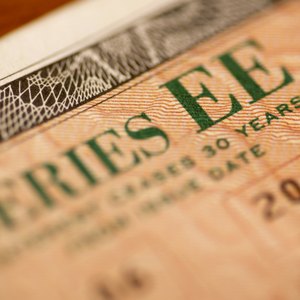
The U.S. Treasury issues savings bonds to savers who want a guaranteed, risk-free return on their investment. Currently, the Treasury issues two series of savings bonds: EE and I. According to TreasuryDirect, both reach initial maturity in 20 years and final maturity in 30.
However, in many other respects, the two are quite different. You can calculate the maturity value of a Series EE bond since the interest rate is fixed (on bonds issued in 2005 or after). Series I bond interest rates vary with inflation, so it’s impossible to estimate their final value meaningfully.
How Do EE Savings Bonds Work?
EE savings bonds are an example of a zero coupon bond in that they pay all of their accrued interest at maturity or when you cash them in. Until then, there is no coupon payment or cash flow, and the bondholder receives no interest payments. The Treasury sells these bonds with a fixed interest rate that accrues monthly and compounds semiannually.
But Series EE has an interesting wrinkle: At the 20-year mark, the Treasury ensures that the bond’s value has at least doubled. If it hasn’t, it adds enough principal to double the value of a bond.
How Do You Calculate the Maturity Value of an EE Savings Bond?
You need two variable inputs to calculate the value of an EE savings bond (A) when it matures in 30 years: the initial purchase amount (P, the current bond price) and the stated coupon rate (r, the interest rate). Two other factors are fixed: the number of years until the final maturity date (t = 30) and the number of compounding periods per year (n = 2).
You use the formula A= P(1+r/n)(nt) to calculate the bond’s value at maturity, but you must break up the work into two steps.
The first step is to compare the stated bond interest rate with 3.5 percent, the approximate yield to maturity (YTM) that will double the bond’s value in 20 years. The second step requires you to choose the correct procedure for calculating the bond’s 30-year value.
If the fixed interest rate is below 3.5 percent, the value after 20 years is double the initial purchase price. In this case, you must calculate and add in the interest on the remaining 10 years until final maturity. But if the interest rate is 3.5 percent or higher, you can calculate the 30-year value directly using the formula given above.
Example: How Much Is a $100 Series EE Bond Worth After 30 Years?
In the first scenario, assume a new Series EE bond with $100 face value (i.e., a $50 current price equal to its present value) is paying a current yield of 2.1% in annual interest, which is below the 3.5 percent threshold annual coupon rate. By definition, you pay the current market price of $50 since the price of the bond is half the face value of the bond, or $100 (its par value after 20 years). Apply the formula to estimate what the value will be after another 10 years (i.e., for year 20 through the end of year 29):
A= P(1+r/n)(nt)
A = $100 x (1+ 0.021/2)(2*10)
A = $123.23
Note that in this example, we assume the interest rate remains the same after year 20, but the issuer (i.e., the Treasury) can apply a different rate after 20 years.
Now suppose the original interest rate is 4 percent. To estimate the bond’s value at final maturity, simply apply the formula to the initial $50 current value for the entire 30-year period since the interest rate exceeds 3.5 percent:
A= $50 x (1+ 0.04/2)(2*30)
A = $164.05
These are close valuation estimates but not precise to the penny because of rounding errors.
You can use financial calculators provided by the Treasury Department and other online bond yield-to-maturity calculators or spreadsheets (including Microsoft Excel) to compute these numbers without doing the math. Along with using a YTM calculator, you can also look up old savings bonds that are still in circulation.
Paper vs. Electronic Savings Bonds
The Treasury sells only electronic Series EE savings bonds, meaning they exist only in your account, not on paper. However, TreasuryDirect says you can use your IRS tax refund to buy up to $5,000 of paper Series I savings bonds (in addition to the $10,000 available electronically). Typically, you buy Series I paper bonds to give as gifts.
Cashing Savings Bonds Early: What to Know
You cannot redeem savings bonds during the first 12 months of ownership. Also, you’ll forfeit three months of interest if you redeem a savings bond during the first five years.
After five years, you can cash in your bonds without a penalty. Federal income taxes are due when you cash the bonds, although you can pay taxes on interest annually throughout the bond’s lifetime. Saving bonds are exempt from state and local income taxes.
References
Tips
- At the time of publication, interest rates on savings bonds were at record low levels. If rates increase in the future, the values of savings bonds at maturity may be slightly higher than the calculated estimates.
- Paper series EE savings bonds are purchased for one-half of the face value. For example, $1,000 bond initially cost $500.
Writer Bio
Eric Bank is a senior business, finance and real estate writer, freelancing since 2002. He has written thousands of articles about business, finance, insurance, real estate, investing, annuities, taxes, credit repair, accounting and student loans. Eric writes articles, blogs and SEO-friendly website content for dozens of clients worldwide, including get.com, badcredit.org and valuepenguin.com. Eric holds two Master's Degrees -- in Business Administration and in Finance. His website is ericbank.com.

